
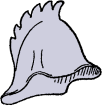


 |
 |
 |
 |
| FIG. 560. | FIG. 561. | FIG. 562. | FIG. 563. |
 |
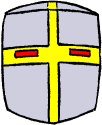 |
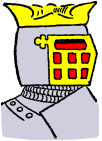 |
| FIG. 564. | FIG. 565. | FIG. 566. |
 |
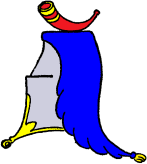 |
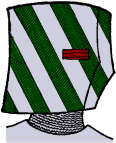 |
| FIG. 567. | FIG. 568. | FIG. 569.--Painted "Pot-Helmet," c. 1241. |
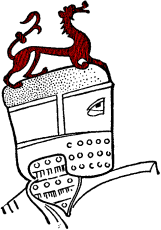 |
| FIG. 570.--"Pot-Helmet," from the Eneit of Heinrich von Veldeke. |
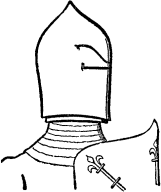 |
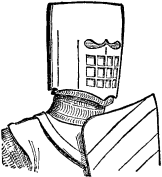 |
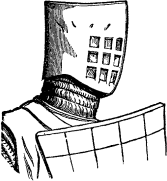 |
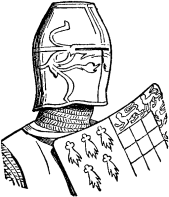 |
| FIG. 571.--Helmet of Hamelin, Earl of Surrey and Warenne (d. 1202). (From MS. Cott., Julius, C. vii.) | FIG. 572.--From the seal of Richard de Clare, Earl of Gloucester and Hertford (d. 1262). | FIG. 573.--From the seal of John de Warenne, Earl of Surrey (d. 1305). | FIG. 574.--From the seal (1315) of John de Bretagne, Earl of Richmond. |
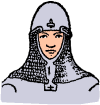 |
 |
 |
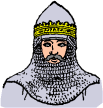 |
| FIG. 575. | FIG. 576. | FIG. 577. | FIG. 578. |
 |
| FIG. 579. |
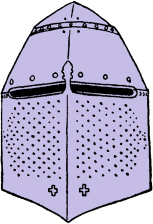 |
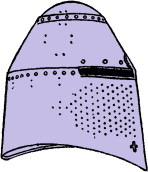 |
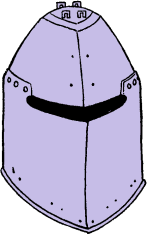 |
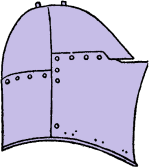 |
| FIG. 580. | FIG. 581. | FIG. 582. | FIG. 583. |
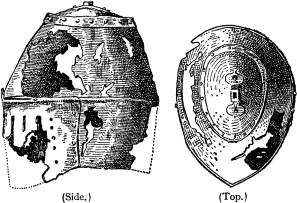 |
| FIGS. 584 and 585.--The "Linz" Pot-Helmet. |
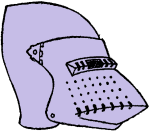 |
| FIG. 587. |
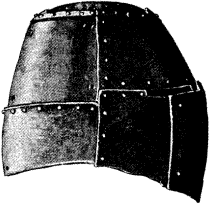 |
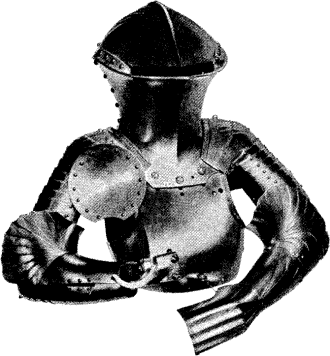 |
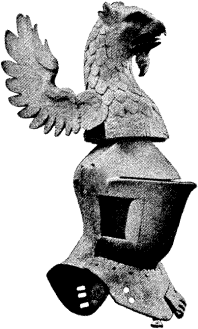 |
| FIG. 586.--Pranker-Helm. | FIG. 591.--Ferman Tilting Armout, 1480, from the Collection in the Museum at Vienna. | FIG. 592.--Tiltling-Helmet of Sir John Gostwick, 1541. |
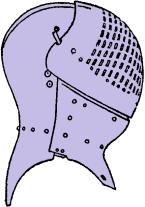 |
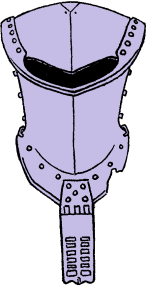 |
| FIG. 588. | FIG. 589. |
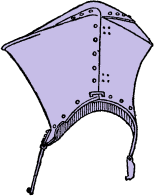 |
 |
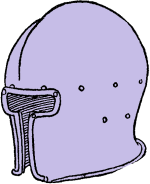 |
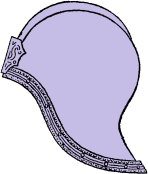 |
| FIG. 590. | FIG. 593. | FIG. 594. | FIG. 595. |
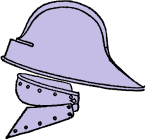 |
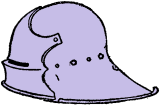 |
| FIG. 596. | FIG. 597. |
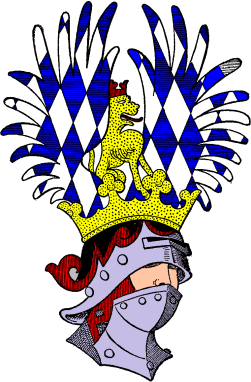 |
| FIG. 598.--Schallern with Crest of Bavaria (Duke Ludwig of Bavaria, 1449). |
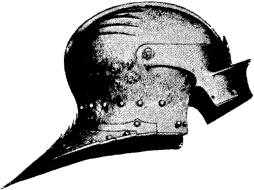 |
| FIG. 599.--Schallern (end of fifteenth century). |
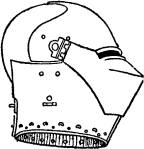 |
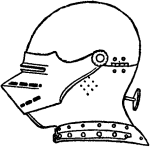 |
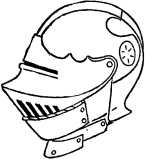 |
| FIG. 600. | FIG. 601. | FIG. 602. |
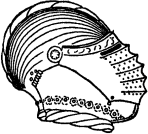 |
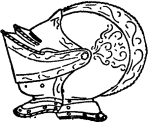 |
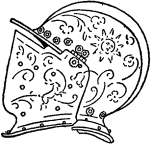 |
| FIG. 603. | FIG. 604. | FIG. 605. |
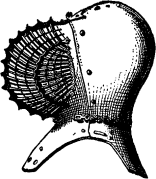 |
| FIG. 606.--"Grid-iron" Helmet (fifteenth century). |
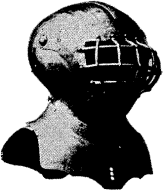 |
| FIG. 607.--Helmet, with Latticed Visor (end of fifteenth century). |
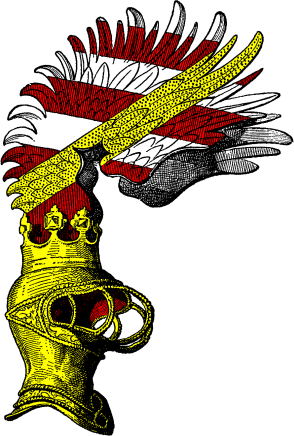 |
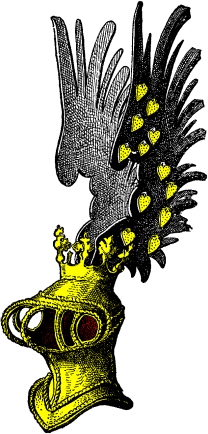 |
| FIG. 608.--Pageant Helmet, with the Crest of Burgau. | FIG. 609.--Pageant Helmet, with the Crest of Austria (ancient) or Tyrol. |

 the "Tourney Regulations for
the Exposure of Arms and Crest, drawn up by René, Duke of Anjou, King of Sicily and Jerusalem," from Menêtrier's L'Origin des Armoiries.
the "Tourney Regulations for
the Exposure of Arms and Crest, drawn up by René, Duke of Anjou, King of Sicily and Jerusalem," from Menêtrier's L'Origin des Armoiries.
 The rules to be complied with are there set out. Fig. 12 herein is a representation of a "Helmschau," where the examination of the crests is being carried on. It is interesting to notice therein that the whole of the helmets without exception have the grilles. Germany was perhaps the earliest country to fall from grace in the matter, for towards the end of the fifteenth century the buckled helmet is found with the arms of the lower Briefadels (those ennobled by patent), and
the practice continued despite the violent protests of the tournament families, who considered their prerogative had been infringed. The closed helmet consequently sank gradually in Germany to the grade of a mere burgess's helmet, and as such became of little account, although in former times it had been borne by the proudest houses.
The rules to be complied with are there set out. Fig. 12 herein is a representation of a "Helmschau," where the examination of the crests is being carried on. It is interesting to notice therein that the whole of the helmets without exception have the grilles. Germany was perhaps the earliest country to fall from grace in the matter, for towards the end of the fifteenth century the buckled helmet is found with the arms of the lower Briefadels (those ennobled by patent), and
the practice continued despite the violent protests of the tournament families, who considered their prerogative had been infringed. The closed helmet consequently sank gradually in Germany to the grade of a mere burgess's helmet, and as such became of little account, although in former times it had been borne by the proudest houses.
 absolutely discarded all rules affecting the position of the helmet; and though the artistic results may be excellent, his plan cannot be commended, because whilst rules exist they ought to be adhered to. At the same time, it must be frankly admitted that the laws of position seem utterly unnecessary. No other country has them--they are, as has been shown, impracticable from the artistic standpoint; and there can be very little doubt that it is highly desirable that they should be wholly abolished.
absolutely discarded all rules affecting the position of the helmet; and though the artistic results may be excellent, his plan cannot be commended, because whilst rules exist they ought to be adhered to. At the same time, it must be frankly admitted that the laws of position seem utterly unnecessary. No other country has them--they are, as has been shown, impracticable from the artistic standpoint; and there can be very little doubt that it is highly desirable that they should be wholly abolished.